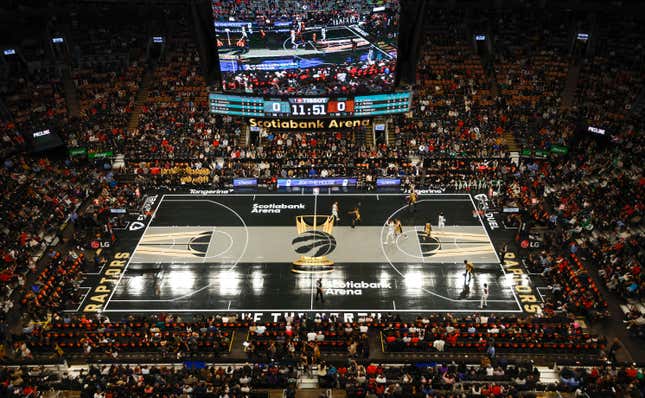
Nobody expected the NBA’s inaugural In-Season Tournament to have it all figured out right away. However, there are some drastic changes that need to be made. Friday night marks the final portion of the NBA In-Season Tournament’s Group Stage. After this week, the tournament whittles down to eight teams in December. Shrinking the tournament from 30 teams to eight in the span of one night feels like shoddy plot development, though.
The NBA needs to adopt a Keep it Simple, Stupid strategy for their prized showcase. Simplicity is the most important goal in a design to ensure the highest levels of interaction. Minimalism is king amid an 82-game schedule. The In-Season Tournament needs to be streamlined into a simpler, single-elimination format next season.
The first two weeks lacked stakes because they delayed the adrenaline rush for two weeks. The first night of the In-Season Tournament featured a flurry of finishes. The Warriors and Thunder went down to the wire, with Draymond Green nearly nullifying Steph Curry’s game-winning bunny; Milwaukee squeaked by the Knicks and Zach Lavine’s triple off the back iron spared Brooklyn. To top it off, the Blazers beat the Grizzlies in overtime and the Pacers survived against the Cavaliers. It was the best night of early November action the league has seen in ages. Since then, it’s fizzled.
After that exhilarating start though, fans have had to perform calculations, glancing at schedules and group play standings to determine what it even meant. It takes deep dives into analysis and schedules to even understand what each team needs to advance. I was unaware that the Lakers had the best points differential in the West or that they’re undefeated through three games or that the Pacers are in position to advance to the quarterfinals. Philly may not advance after losing to Indianapolis in their second group stage game. The Suns, Nuggets and Sixers could each be eliminated in anticlimactic fashion.
Why have five single-elimination contests when the NBA could host 29 or 30 of them? The sluggish nature of the NBA Playoffs is what irks even the most avid NBA aficionado. The In-Season Tournament can’t afford to be a cheap knockoff of the playoffs. Adam Silver’s tournament won’t truly pop off until they embrace a completely single-elimination format. What we’ve got now is the 2 percent milk of single-elimination.
March Madness already has the market locked down on wonky equations, fugazi quadrant analysis and breakdowns of who is on the bubble.
There’s two ways for the NBA to get this done. The strategy that can be implemented in the near future is for the reigning NBA champions to receive a first-round bye. Instead, they can face one another in a regular-season matchup the night before to get their 82nd game out of the way. Meanwhile, 28 teams can go at each other’s necks in matchups that immediately carry dramatically more importance, then the defending conference champions parachute back in for a Sweet 16.
Once the NBA expands to 32 teams in a few seasons, this becomes a simpler process. Scheduling matchups into one night would be a hassle, but nothing the league can’t overcome. The league would have to use a flexible second-half schedule to accommodate the unpredictable nature of a 30-team free-for-all. For decades, the NBA has adhered to an orthodoxy that dictates the flow of the schedule. A single-elimination tourney would either have to exist outside the normal schedule or the league would have to be more flexible moving games around in the second half of the season.
Currently, a total of 66 games count towards the In-Season Tournament. A single-elimination format like the one described above would slice that in half to 29 or 30. But sometimes, less is more.
If you want to grab the attention of fans for one night, what’s more likely to do it? A matchup, which is one of four group stage games, which factors in head-to-head math and two potential wild-card slots across six groups or a winner-take-all? That is waaaay too complicated.
Silver is the commish who truly embraced advanced analytics, but even he has to recognize how the byzantine nature of this tournament set-up is holding it back. The majority of the basketball-viewing public is holding out until the win-or-go home round begins with the quarterfinals on Dec. 4.
Given modern attention spans and the panoply of options most viewers have, the NBA is living in a fantasy if they think their current format will captivate viewers on Tuesday or Friday nights. Right now, the In-Season Tournament is stuck in neutral when the league needs to attract more eyeballs and drive the conversation. Scrapping the slick courts and maybe implementing the Elam Ending they’ve used in All-Star contests would be useful alterations to make before next season’s edition, but single-elimination is the elixir the NBA needs.